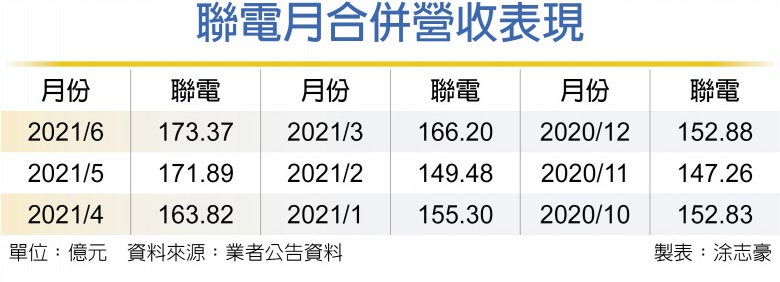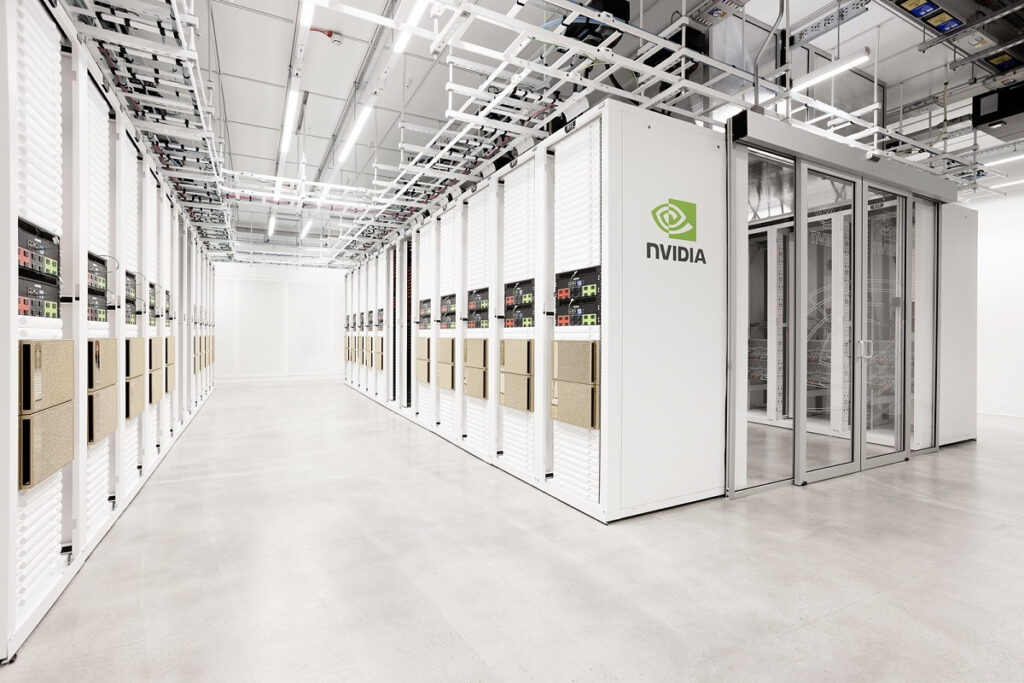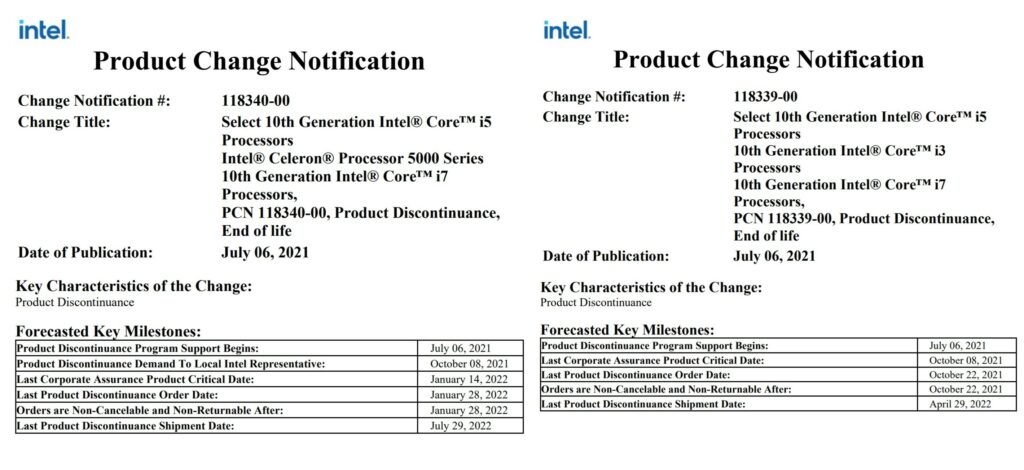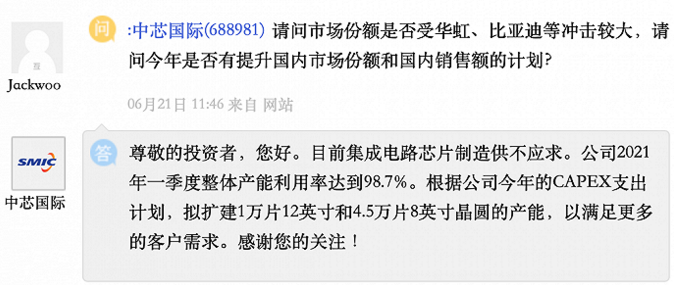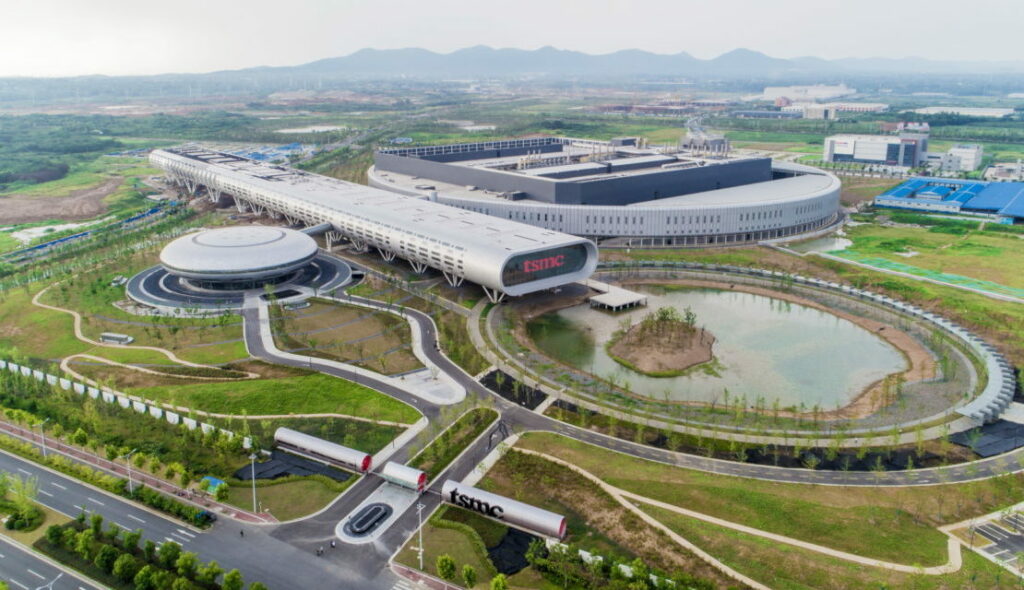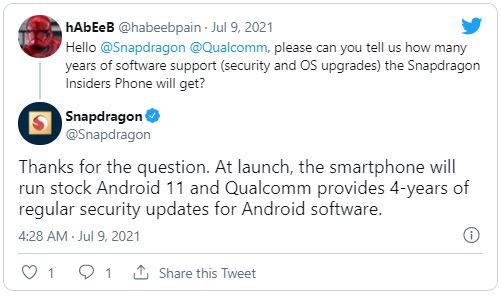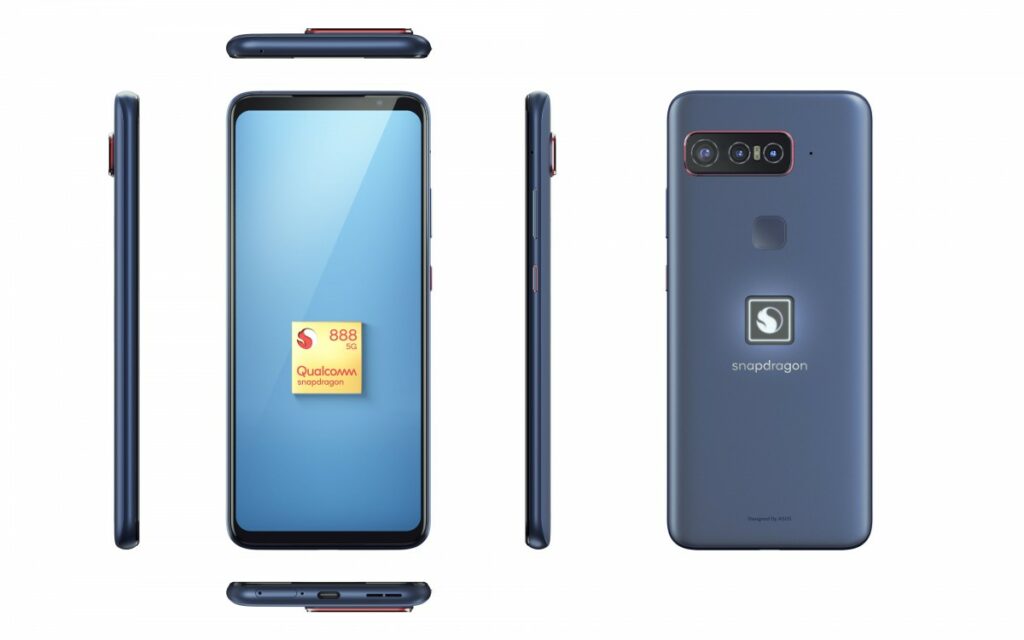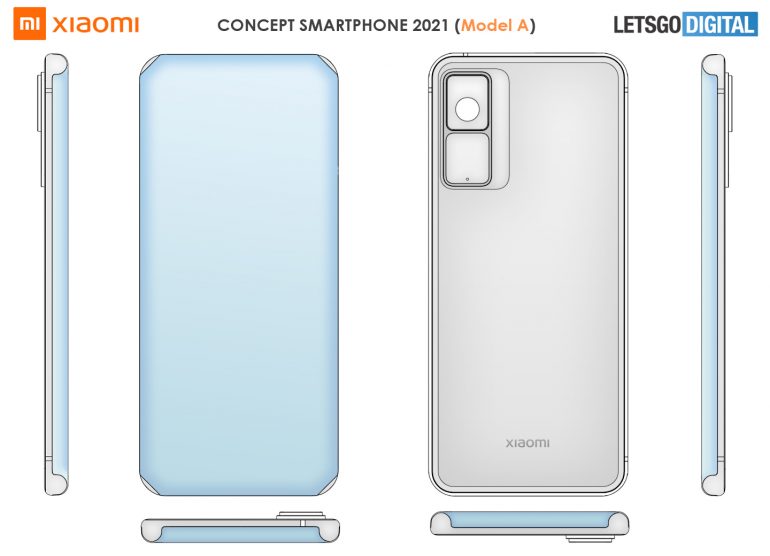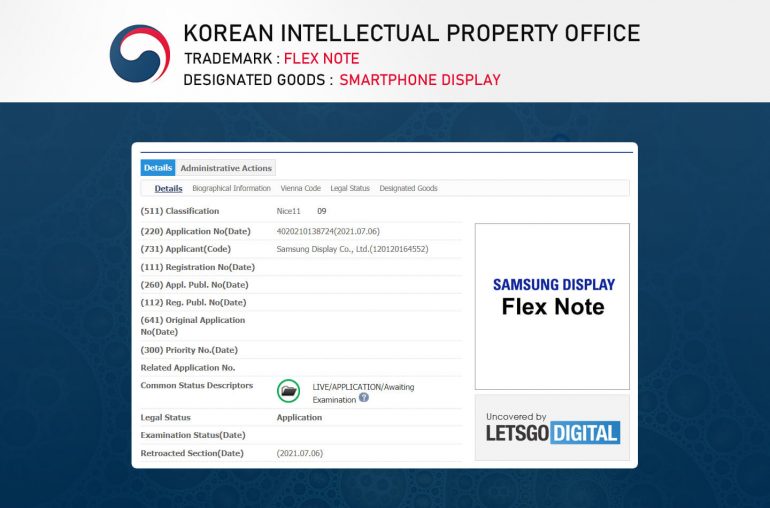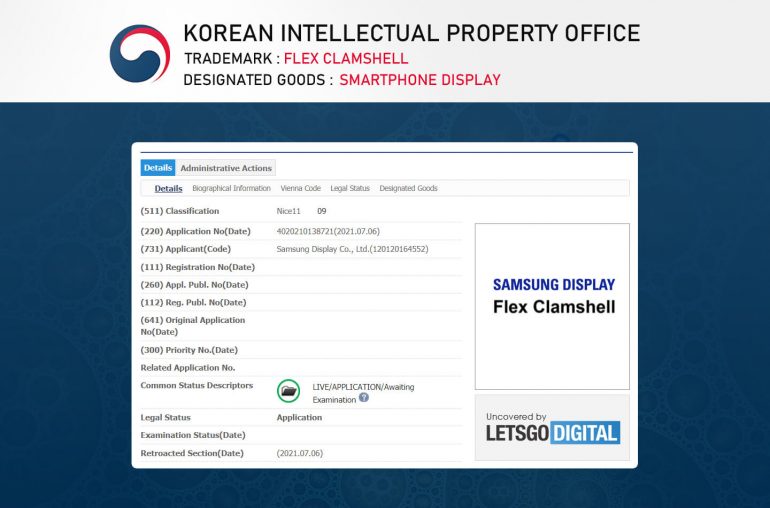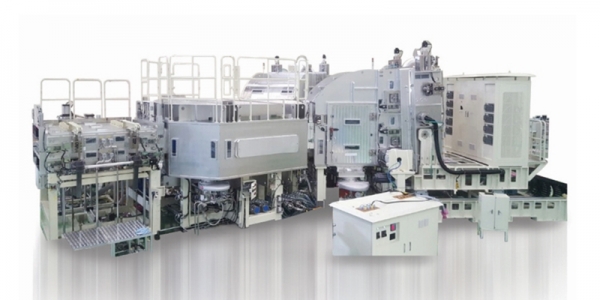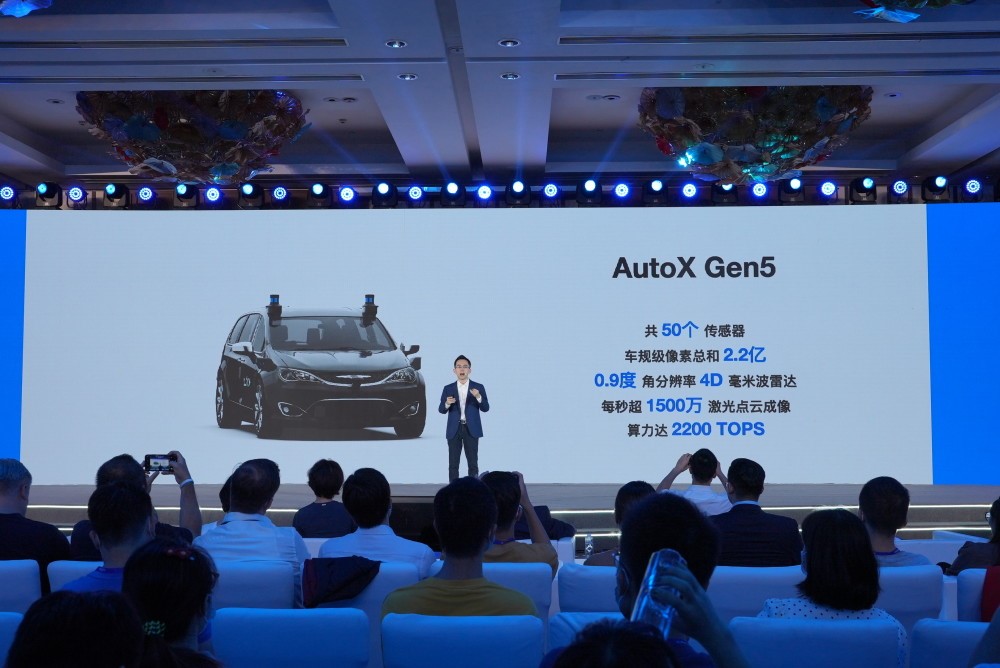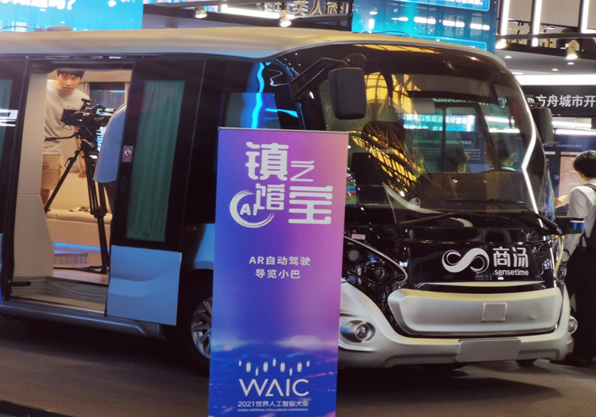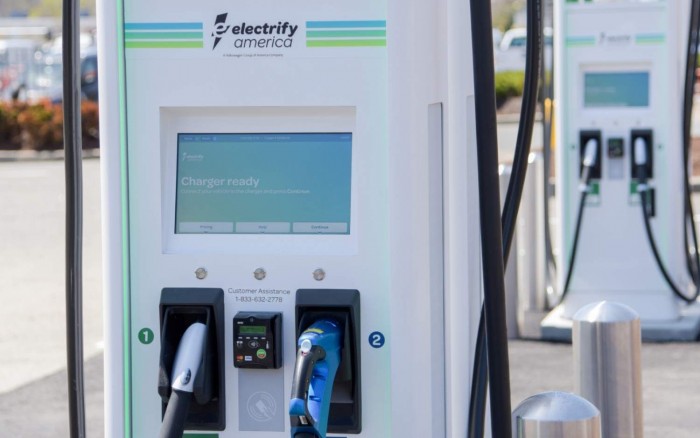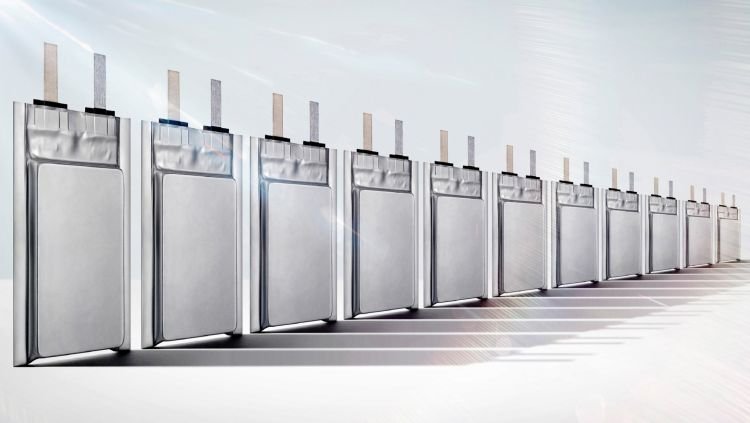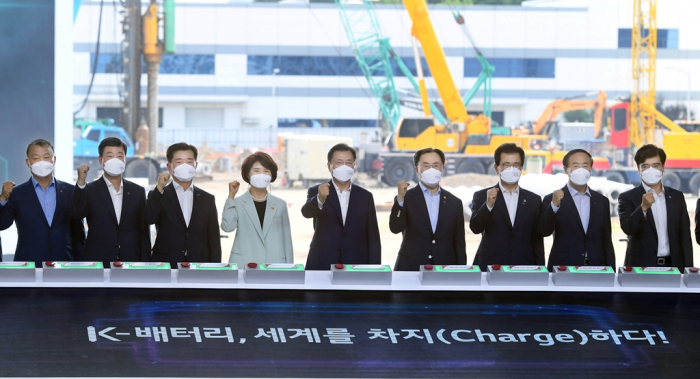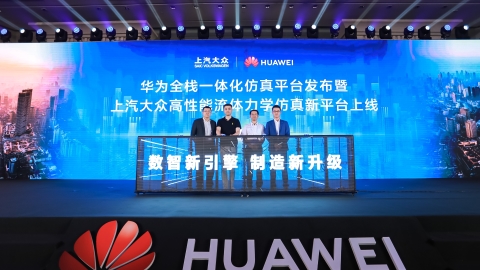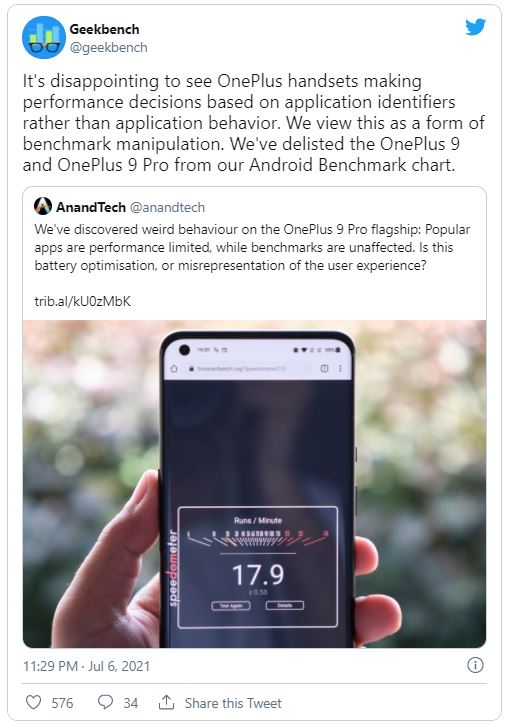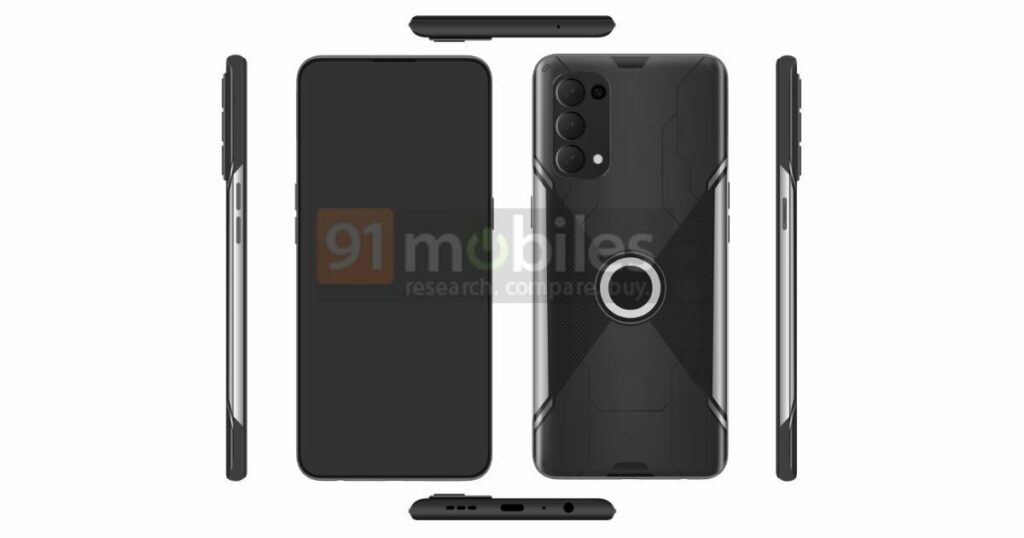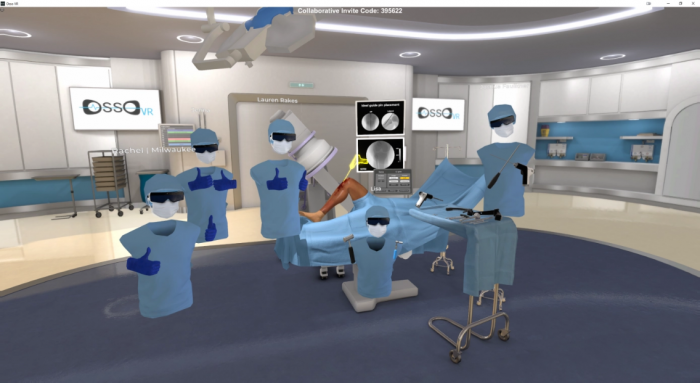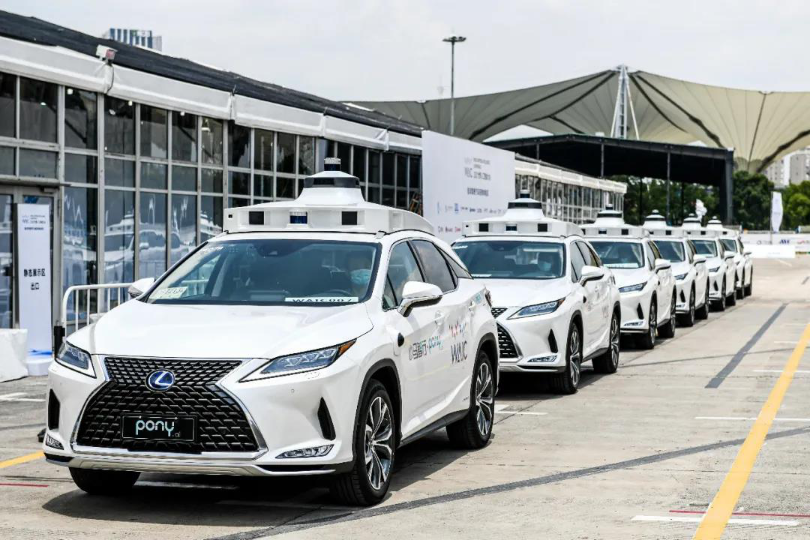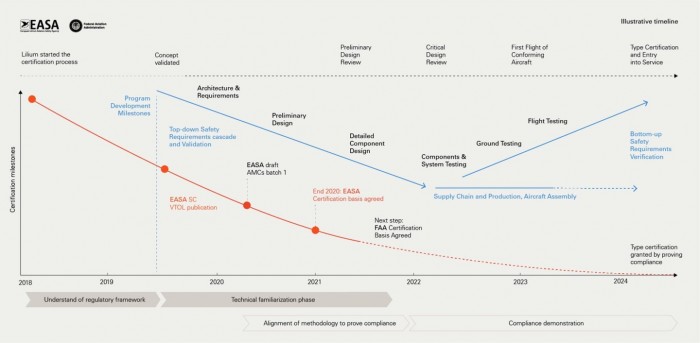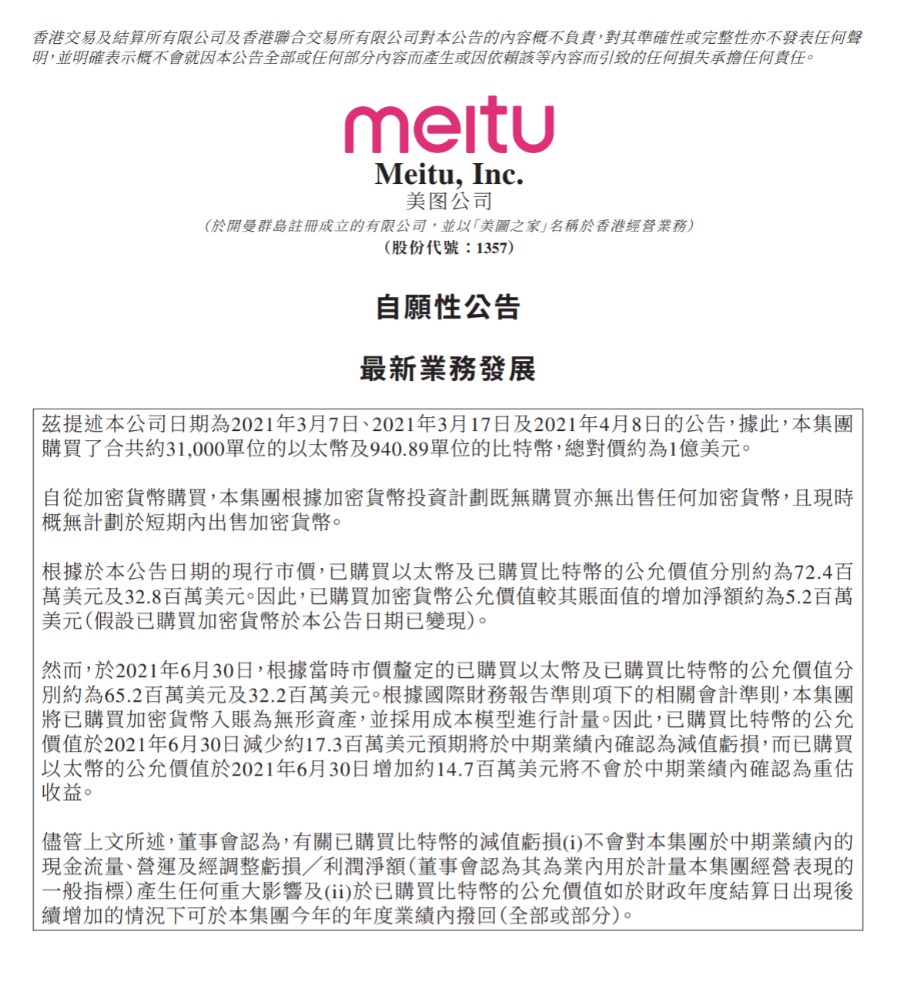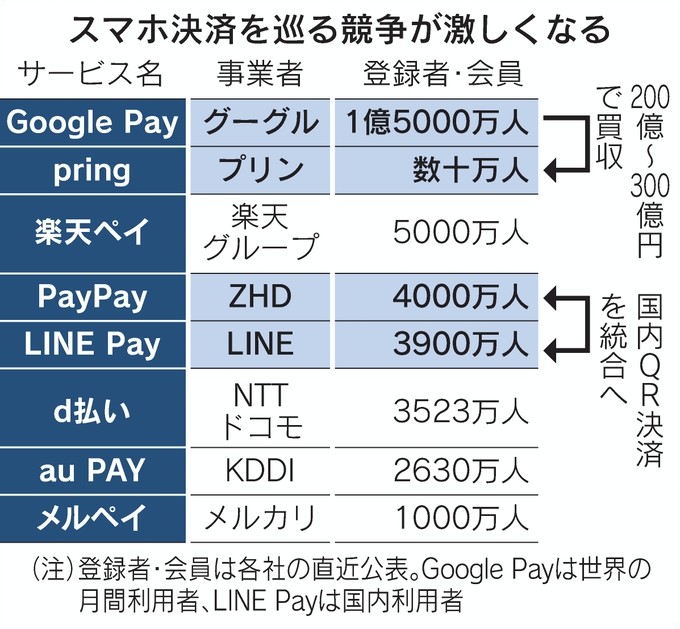
7-9 #Stop : OnePlus has been accused of throttling some of the most popular Android apps; Huawei has announced it has reached a license agreement with a supplier of Volkswagen Group; TSMC is allegedly coming under pressure from the US over its plan to expand foundry capacity in China; etc.
UMC believes that market demand growth is far greater than the rate of increase in production capacity. This structural problem is difficult to solve in the short term, and the shortage of semiconductor production capacity may continue until 2023. Jian Shanjie, the joint general manager of UMC, has said that from the perspective of demand trends, the demand for 5G phones, notebook computers and automotive electronics will not only continue until 2021, but may also extend beyond 2022. Its 12” factory in mainland China Leadcore Technology, has reached the first stage full load target in mid-2021 as scheduled, with a monthly capacity of 25,000 units. The P5 monthly production capacity of Nanke’s wafer 12A fab will increase by 10,000 units, and the new production capacity will be opened in 2022. P6 will also be built to achieve a monthly production capacity of 27,500 pieces, which is expected to enter production in 2Q23. (CN Beta, CNA, LTN, Epoch Times, China Times)
UMC is expected to enjoy a strong 2H21, with continued growth in gross margins and wafer ASPs, according to Digitimes. The foundry’s overall ASPs for 2021 will be nearly 10% higher than the previous year’s levels. UMC is already in talks about orders for 2022 and 2023. The foundry will also see its additional fab capacity come online by 2023. (Digitimes, press, Laoyaoba, China Times)
J W Kuo, chairman of Topco Group, the largest semiconductor equipment agent in Taiwan, has pointed out that as far as his personal understanding is concerned, TSMC’s orders are almost fully booked by 2024. He has further pointed out that the U.S. government vigorously recruited TSMC to set up factories in the United States because, due to geographical factors, TSMC’s development has gradually formed a local semiconductor supply chain. (Laoyaoba, UDN, Sina)
Nvidia is launching the USD100M Cambridge-1, the most powerful supercomputer in the United Kingdom, and it is making it available to external researchers in the U.K. health care industry. The machine will be used for AI research in health care, and it is one of the world’s fastest supercomputers. Nvidia is collaborating with AstraZeneca, maker of one of the COVID-19 vaccines, to fuel faster drug discoveries and creating a transformer-based generative AI model for chemical structures. (VentureBeat, Nvidia, OfWeek)
Intel has issued product-change notifications (PCNs) to announce the discontinuation of its first Hybrid processors, codenamed “Lakefield”, besides 15W U-segment variants of its “Ice Lake” and “Comet Lake” mobile processors. With the product discontinuation notice put out, it sets the ball rolling toward a year-long process where Intel solicits its final orders for these chips from OEMs and distributors, fulfills these orders last by 2022, and marks these parts “End of Life” (EOL). (CN Beta, CNX Software, Techpower Up)
SMIC has expressed that its IC chips supply is unable to satisfy the demand currently, with its 1Q21 capacity utilization rate reaching 98.7%. According to the company’s CAPEX plan for this year, SMIC targets to expand the production capacity of its 12” and 8” wafers by 10,000 units and 45,000 units respectively, in order to address the growing demand from customers. (Laoyaoba, OfWeek, Sina, AA Stock)
TSMC is coming under pressure from the US over its plan to expand foundry capacity in China, according to Digitimes. In Apr 2021, TSMC announced that it would invest USD2.89B in Nanjing’s 12” wafer fab to expand its 28nm production capacity. It is said that TSMC is under pressure from the United States for this move. According to Digitimes, the US government is concerned that TSMC’s Nanjing plant expansion project will help China to promote self-sufficiency in semiconductors. TSMC plans to build a 28nm capacity with a monthly output of 40,000 pieces at the Nanjing plant. The new capacity is expected to begin gradually in 2H22 and reach the monthly production scale target by mid-2023. (Digitimes, Laoyaoba, Business Korea)
Qualcomm is unveiling a new smartphone dubbed “Smartphone for Snapdragon Insiders”. The company will provide “4- years of regular security updates for Android software” for the Smartphone for Snapdragon Insiders / Snapdragon Insiders Phone. Qualcomm has also revealed that the Smartphone for Snapdragon Insiders will run Stock Android 11 out of the box. (GizChina, Phone Arena, Gizmo China)
Qualcomm partners with ASUS releasing a smartphone of “Smartphone for Snapdragon Insiders”, priced at USD1,500 – 6.78” 1080×2448 QHD+ Super AMOLED 144Hz from Samsung Display protected by Gorilla Glass Victus and supports Always-On Display, Qualcomm Snapdragon 888, rear tri 64MP-12MP ultrawide-8MP telephoto 3x optical zoom + front 24MP, 16+512GB, Android 11.0, 4000mAh 65W with Qualcomm Quick Charge 5.0. It is bundled with a pair with premium ANC earbuds by Master & Dynamic. (GSM Arena, Android Central)
Cirrus Logic has announced that it has entered into an agreement to acquire California-based Lion Semiconductor for USD335M in cash. This acquisition brings unique intellectual property and products for power applications in smartphones, laptops and other devices and accelerates growth of the company’s high-performance mixed-signal business. (Laoyaoba, Business Wire, Market Watch)
TCL Group is set to start production of mobile phone and television display panels at its Tirupati, Andhra Pradesh. Mike Chen, General Manager, TCL India has indicated that the company has announced an investment of CNY1.53B (~USD219M), in Sept 2019 to start manufacturing display modules in India. TCL group company CSOT (China Star Optoelectronics Technology) will manufacture 8M 32”-75” TV panels and 30M 3.5”-8” mobile phone panels annually. Out of 11 production lines, 5 will be allocated to TV panels and 6 to displays for mobile phones. (CN Beta, Funtitech, Economic Times)
Xiaomi’s patent illustrates a smartphone with a four-sided curved display. In essence, the phone’s display would wrap around all 4 front edges and corners of the device. While the back of the phone will not feature any display elements, most of the device’s side panels would consist of a screen strip. (Android Authority, LetsGoDigital, CN Beta)
Currently 90% of the world’s OLED chips are made in South Korea, most by Samsung Electronics. Taiwan Semiconductor Manufacturing Company (TSMC) has joined later and now accounts for the remaining share. These two companies are now overwhelmed. A shortage of these products has intensified as demand reached a record in 2021, with sales by volume reaching 100B chips in Apr 2021. Capacity at Samsung and TSMC remains strained, with the latter in a drive to increase automotive chip production by 60%. The incentive for Samsung and TSMC to allocate precious capacity to these lower-margin display chips continues to fall. (Laoyaoba, MoneyDJ, Financial Times)
According to Digitimes, Taiwan-based DDI design manufacturers have pointed out that 3Q21 foundry quotations have risen by about 10%. After the addition, the quotations of packaging and testing capacity have also risen. In consideration of response costs, the quotations of DDI and TDDI chips have also increased. This means that 3Q21 terminal DDI and TDDI chip quotations should increase by 10% or so compared to 2Q21. (Digitimes, Laoyaoba)
Samsung Display has submitted another 11 trademark applications related to the new generation of flexible screens to the Korean Intellectual Property Office (KIPO). These include Flex Note, Flex Clamshell, Flex Square, Flex N, Flex X, Flex Bar, R Flex, and Rollable Flex, Slidable Flex, Flex Rollable, and Flex Slidable. (Laoyaoba, LetsGoDigital)
Display equipment maker Avaco has begun talks with LG Display (LGD) over the specifications of the sputters that will be used to manufacture low-temperature polycrystalline oxide (LTPO) thin-film transistor (TFT) OLED production. LGD will likely give the order from the equipment once its customer Apple approves its OLED production line. Avaco can expect to supply the equipment to LGD’s E6-1, E6-2 and E6-3 lines. Avaco previously supplied LGD with the LTPO TFT sputters for the E5 line, which manufactures OLED panels for Apple Watch. (Laoyaoba, The Elec)
HannStar Display plans to invest NTD17B (USD607.4M) to build an additional LCD panel production capacity of 30,000 substrates monthly, which will come online by 2023. HannStar’s 5.3G plant is able to process around 130,000-140,000 glass substrates a month at the moment and the investment will be the first capacity expansion at the plant since it began operation in 2005. (Laoyaoba, Digitimes, press)
According to Display Supply Chain Consultants, Apple will bring an AMOLED display to the 10.9” iPad in 2022. Apple will then expand OLED to the 11” and 12.9” iPad Pro models in 2023. These display panels will be solely supplied by Samsung Display. (Gizmo China, iMore, The Elec, Mac Rumors)
According to Display Supply Chain Consultants, Apple will drop the Touch Bar in favor of a traditional function row for its all-new MacBook Pro lineup. Touch Bars continue to be the #3 application with a 18% unit share and 1.2% revenue share in 1Q21. DSCC expects Touch Bars to be exceeded by tablets when Apple starts the adoption of the 10.9” AMOLED iPad. Further, they suggest that Apple may cancel the Touch Bar in the future. (DSCC, Gizmo China, 9to5Mac)
AutoX, a Chinese self-driving startup funded by Alibaba and others, launched its fifth-generation self-driving system, the AutoX Gen5, which has already gone into volume production. The AutoX Gen5 is armed with up to 50 high-definition automotive-grade sensors, including 28 cameras capturing a total of 220MP per second, 6 high-resolution LiDAR offering 15M points per second, and 4D millimeter-wave radars with 0.9-degree resolution encompassing 360 degrees around the vehicle. (Laoyaoba, Sina, OfWeek, Gasgoo)
SenseTime has showcased the SenseAuto self-driving AR minibus for the first time. SenseAuto smart car solution of SenseTime not only provides road full-scenario perception solutions for smart driving, but also creates convenient, safe and personalized smart services for smart cabins. SenseAuto AR minibuses will also be showing real scene in the screen. (Laoyaoba, Sina, SenseTime)
Volkswagen is reportedly looking to sell a stake in Electrify America that would come with a USD1B investment into its electric vehicle charging network. Electrify America, the largest open DC fast charging network in the U.S., is accelerating the rate of charging infrastructure installations across the U.S., currently with more than 630 charging stations and over 2,700 individuals chargers at those stations. (CN Beta, Electrek, Reuters)
Hyundai Motor will invest in U.S.-based battery maker SolidEnergy Systems (SES), as part of its push to secure the technology to make its own electric vehicle (EV) battery. Hyundai Motor has reportedly signed a KRW113.6B (USD100M) share purchase agreement with SES. SES formed a partnership with General Motors early 2021 to co-develop lithium-metal battery technology. The two companies plan to construct test production facilities in Boston by 2023 and commercialize the battery products by 2025. (Laoyaoba, Reuters, Korea JoongAng Daily)
South Korea’s major battery makers have pledged to invest KRW40.6T (USD35.4B) in the electric vehicle battery industry over the next decade as part of a government-led initiative to position the country as the global leader. The investment to be led by three key players – LG Energy Solution, Samsung SDI and SK Innovation– will help them better compete against dominant players such as China’s Contemporary Amperex Technology (CATL). (CN Beta, Ked Global)
Chinese auto giant GAC has said it will mass-produce its superfast charging technology in Sept 2021, which will be first equipped on the Aion V model. GAC will build more than 100 superfast charging stations by 2021. Guangzhou Juwan Technology, a company incubated by GAC, has said GAC’s superfast charging is fully available in 3C and 6C versions. (Laoyaoba, CNEVPost)
Samsung SDI may build a battery cell plant in the United States to support the auto industry’s shift to electrification. Samsung SDI has been in talks with automakers including Stellantis, Amazon and Ford Motor-backed electric vehicle startup Rivian to supply batteries manufactured at its potential U.S. factory. Samsung SDI is considering investing at least KRW3T (USD2.62B) to manufacture batteries for Stellantis and a minimum of KRW1T for batteries to Rivian. (Laoyaoba, Reuters, YNA)
Ericsson has announced that it is teaming up with MIT to work on two research projects that will help to build new network infrastructure to deliver hardware that could power next-generation 5G and 6G mobile networks. Specifically, they will work on lithionic chips to enable neuromorphic computing. (Neowin, Ericsson)
OnePlus has been accused of throttling some of the most popular Android apps. The OnePlus 9 and 9 Pro have been removed from Geekbench charts. OnePlus confirms the reason is to improve battery life and heat management. (GSM Arena, Engadget, Android Central, AnandTech, Twitter)
OPPO seems to be working on a new gaming smartphone based on a design spotted on the European Union Intellectual Property Office (EUIPO). It seems to have a design like that of gaming-oriented smartphones. (Android Headlines, 91Mobiles)
Huawei nova 8i is launched in Malaysia – 6.67” 1080×2376 FHD+ HiD IPS LCD, Qualcomm Snapdragon 662, rear quad 64MP-8MP ultrawide-2MP macro-2MP depth + front 16MP, 8+128GB, Android 11.0, side fingerprint, 4300mAh 66W, MYR1,299 (USD312). (GSM Arena, Huawei)
Osso VR has raised USD27M to train doctors and other medical professionals using virtual reality surgery simulations. San Francisco-based Osso VR has said its virtual reality surgical training and assessment platform has been validated at numerous hospitals as a training tool for surgeons. The company says it works with industry leaders like Johnson & Johnson, Stryker, and Smith & Nephew to ensure that patients have safe access to the highest-value procedures. (CN Beta, TechCrunch, VentureBeat)
Chinese autonomous car technology startup Pony.ai has announced that the pilot operation of its Robotaxi service is launched in Shanghai. Pony.ai has also deployed its Robotaxi service in Guangzhou, Beijing, Irvine and Fremont. The latest generation vehicles, which will feature lidar solutions developed in collaboration with Luminar, will start volume production in 2023. (CN Beta, Laoyaoba, Gasgoo, China Daily)
Huawei has announced it has reached a license agreement with a supplier of Volkswagen Group. The agreement includes a license under Huawei’s 4G standard essential patents (SEPs), which covers Volkswagen vehicles equipped with wireless connectivity. This agreement marks Huawei’s largest licensing deal in the automotive industry. Huawei expects more than 30 million vehicles to be licensed under its patents based on existing license agreements. (Laoyaoba, Huawei, SCMP, Nikkei)
Lilium, an electric vertical take-off and landing (eVTOL) startup, is working hard to obtain airworthiness certifications from the United States Federal Aviation Authority (FAA) and the European Aviation Safety Agency (EASA). Lilium has announced partnerships with many partners, such as Honeywell’s fly-by-wire flight control, avionics, cockpit, sensors, and communication transponders, Toray’s carbon composite materials, Aciturri’s fuselage/wing manufacturing, etc. (CN Beta, New Atlas)
One97 Communications, the parent of Indian payments firm Paytm, will reportedly file a draft prospectus as early as 12 July 2021 for a domestic initial public offering (IPO) that seeks to raise USD2.3B. The money will be raised via sale of new Paytm stock as well as a secondary offering of shares at an expected valuation of USD24B-25B with an option to raise the amount at a later stage if required. (CN Beta, Live Mint, India Times)
Meitu has taken a USD17.3M hit on its Bitcoin (BTC) holdings — but on the upside, its Ether (ETH) holdings have gained USD14.7M. The company has spent a total of USD100M on BTC and ETH in Mar-Apr 2021, acquiring a total of 940.89 BTC for USD49.5M and 31,000 ETH for USD50.5M. The fair value of its BTC and ETH holdings is based on the market prices as of 30 Jun 2021. (CN Beta, Sina, Coin Telegraph, Meitu)
Visa is partnering with over 50 crypto companies to allow clients to spend digital currencies. This means clients can buy from any merchant accepting Visa, even those who do not accept crypto. More than USD1B was spent on crypto-linked Visa cards in 1H21. Visa is partnering with over 50 cryptocurrency companies including FTX and Coinbase to allow clients to spend and convert digital currencies through its card program. (CN Beta, Visa, CNBC, Business Insider)
Google is making a foray into financial services in Japan by acquiring a cashless payment company for JPY20B-30B (USD180M-270M). Google is in negotiations to buy all the shares in pring, a Tokyo-based cashless payment and settlement startup owned by Mizuho Bank and other investors. Google hopes to be able to offer fintech services, such as payments and transfers, in Japan in 2022, following launches in the U.S. and India. (Laoyaoba, Nikkei, Reuters)

